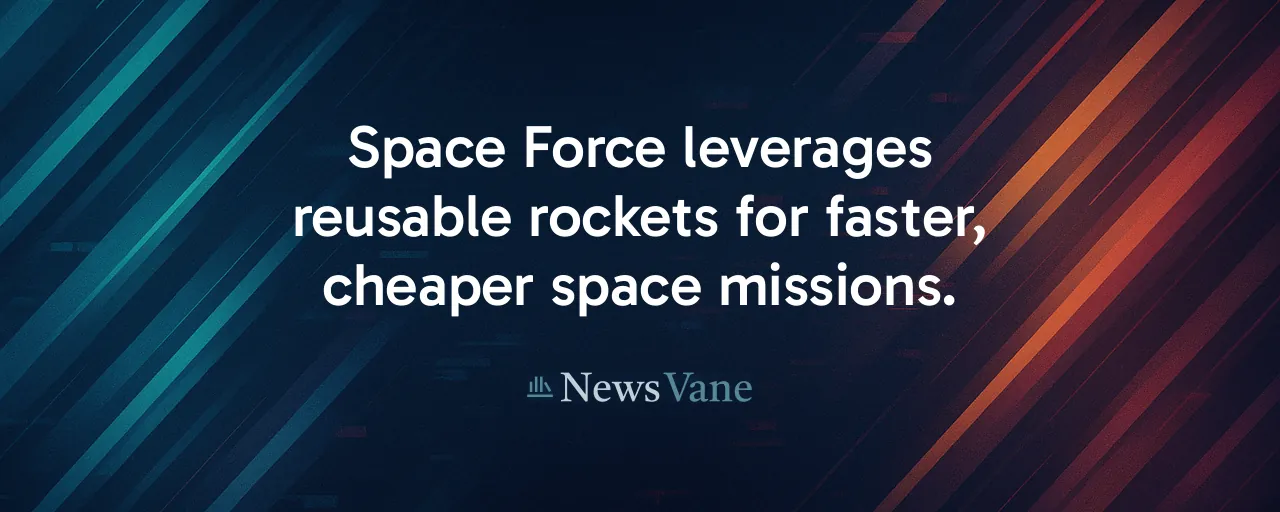A Bold Step Into Orbit
The U.S. Space Force has ignited a new chapter in its mission to secure the nation's interests in space. On June 27, 2025, its Space Systems Command awarded SpaceX an $81.6 million contract for the USSF-178 mission, set to launch in early 2027. This mission will carry a critical weather satellite and experimental payloads, marking a leap in rapid, cost-effective space access. The deal underscores a broader effort to modernize military capabilities while navigating a complex web of economic and strategic priorities.
At the heart of this move lies a drive to deliver results fast. The USSF-178 mission will deploy the Weather System Follow-on-Microwave Space Vehicle 2, designed to sharpen global weather forecasts vital for military operations and civilian safety. Alongside it, the BLAZE-2 payload will ferry small research satellites, fostering innovation across the Department of Defense. By tapping excess capacity on SpaceX's Falcon 9, the Space Force aims to slash costs and timelines, integrating spacecraft in as little as three months.
Why Speed and Savings Matter
The Space Force's strategy hinges on efficiency. Reusable rockets, like the Falcon 9, have cut launch costs by about 25 percent compared to earlier programs, with this mission's price tag well below the $95-150 million average of past efforts. Such savings free up resources for other priorities, from advanced sensors to cyber defense. Rapid integration also means the military can respond to emerging threats or opportunities without years of delay, a game-changer in an era of fast-evolving global challenges.
Weather data, the mission's core deliverable, is no small matter. The new satellite will measure ocean winds, cyclone intensity, and atmospheric particles, filling gaps left by aging systems. These insights guide everything from troop movements to disaster response, benefiting both soldiers and civilians. For coastal communities or shipping industries, better forecasts can save lives and livelihoods, making the mission's impact far-reaching.
The Competition Conundrum
Yet, the decision to lean heavily on SpaceX raises tough questions. The company has secured all initial contracts under the Space Force's new Lane 1 program, which prioritizes lower-risk, cost-efficient launches. While SpaceX's track record and pricing make it a strong choice, this trend could edge out smaller players like Rocket Lab or Blue Origin, stifling innovation over time. A diverse pool of launch providers ensures resilience, especially if technical or political issues disrupt one company's operations.
Historical patterns offer context. In the 1990s, the Pentagon's launch program relied on a handful of providers, leading to cost overruns when competition waned. Today, experts urge a balanced approach: maintain SpaceX's role for near-term reliability while fast-tracking certification for new entrants. This could prevent bottlenecks and keep prices in check, ensuring the U.S. stays ahead in space without betting everything on a single player.
Weighing Broader Impacts
Beyond economics, the mission carries social and environmental weight. Improved weather data will bolster global disaster preparedness, aiding nations reliant on U.S. satellite feeds. Locally, launch sites like Vandenberg Space Force Base expect economic boosts from jobs and infrastructure tied to 2027 operations. However, frequent launches spark concerns about atmospheric pollution and space debris, necessitating the Space Force to balance progress with sustainability.
Transparency is another sticking point. Taxpayers, who fund the $15.6 billion Space Force acquisition budget, deserve clear insights into how contracts are awarded and risks managed. While the Lane 1 program's streamlined oversight speeds up launches, robust safeguards are essential to avoid missteps. Striking this balance will define the program's long-term credibility.
A Path for Progress
The USSF-178 mission reflects a broader push to blend innovation with responsibility. By prioritizing cost, speed, and critical capabilities like weather sensing, the Space Force strengthens national security and public safety. Yet, the reliance on one provider signals a need for strategic adjustments. Expanding opportunities for new launch companies, coupled with clear reporting on environmental and performance metrics, could address concerns while sustaining momentum.
Collaboration offers another avenue. Pairing military satellites with civilian missions, such as those led by NOAA, could maximize scientific gains and public benefits. Such partnerships align with a shared goal: leveraging space for the greater good, from sharper forecasts to cutting-edge research.
As the Space Force charts its course, the USSF-178 mission stands as both a milestone and a test. Success hinges on delivering results while fostering a competitive, sustainable space ecosystem. With careful planning, this balance is within reach, ensuring space remains a frontier for progress and a secure domain.
